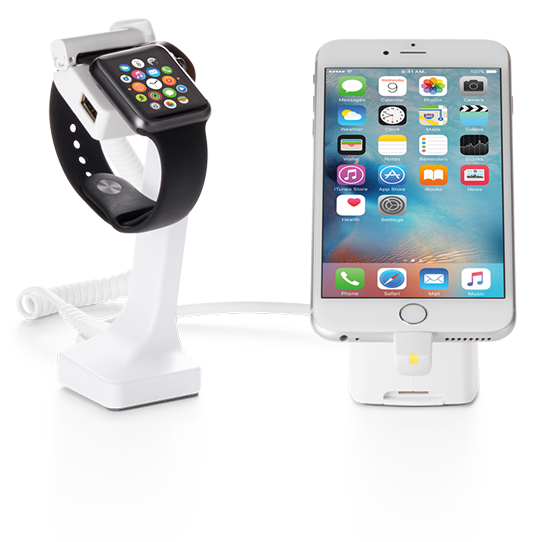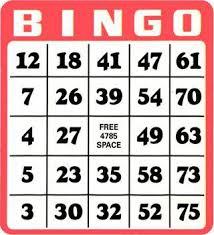Fix a $75 Billion Sales Problem: Product Launch
Why are we consistently missing our ROI targets for new product and market launches? Why can’t salespeople help us launch into new markets? Why can’t salespeople sell new products? These are just a few of the questions I have heard over the last 30+ years. Yes you heard me correctly this sales problem of new product and new market launch has been around a long time. I wanted to help solve this common sales problem so I called the top expert in product launch: David Daniels and he agreed to an interview. David and I worked together in the past and he has helped many companies like HP, VMware, Dell, Schneider Electric, and Optum, and NetApp: I was particularly interested in how product launch techniques in the fast-pace technology world could apply to manufacturing companies.
Hi Dave, let’s start by getting an idea of how big the problem of launching products is in general.
Hi Mark, I like to look at the problem as quantitatively as possibly. Unfortunately, there isn’t any single organization tracking the impact of failed product launches. I did some research and extrapolated a financial impact.
Clayton Christensen from Harvard estimates there are 30,000 new products introduced each year. He also estimates there is an 80% failure rate of those new products. I’ve seen these numbers thrown around and I can’t confirm their accuracy, but I trust the work of Clayton Christensen.
The failure rates seem high to me too. Is there any more data available?
As a matter of fact, there is. There are estimates that the average cost to introduce a new product is $5 million. That includes the cost to design, build, and launch it. Another group, the Product Development and Management Association (PDMA), has more conservative numbers. They estimate the failure rate of product launches to be between 35% and 49%. These failure rates seem more rational, and they break it down by industry.
Assuming 30,000 new products, a 50% failure rate, and $5 million to introduce a new product we can do some basic math to find how much failed product launches cost organizations worldwide…
30,000 x .50 x 5,000,000 = $75 billion sales problem
$75 billion sales problem. That’s huge. Let’s say I’m off by 50%. That’s still an $37.5 billion problem.
Wow that is a huge problem negatively impacting sales and ultimately the bottom line.
Exactly. But I want to point out that the definition of “fail” isn’t consistently defined. There aren’t 30,000 complete flops every year (as in selling zero products). There are 30,000 new products that don’t achieve their business objectives and ROI targets. Selling a few products to a few customers can be worse than not selling any at all.
Why is that David?
It looks attractive at first, but when you look at the long-term cost to support customers, the numbers can get ugly. Many companies double-down too. They want to believe they have the right product, at the right time, and continue to throw money down the drain.
In the world of software it seems companies can absorb failed product launch. For manufactures the cost is very real. How would you apply your technology experience to the manufacturing world?
You’re right. Software companies don’t have inventory. The variable cost to deliver the next product to a customer is nearly zero. The stakes are much higher for manufacturers who have to inventory raw materials, design, build molds, manufacture the product, inventory products, and ship them. The work to identify a market need has to be every bit as rigorous for manufacturers as it is in tech.
What advice from the technology world would to give to CEOs in manufacturing companies?
First, the world of technology functions around disruption. It’s able to do that much more nimbly than manufacturers. From a technology perspective many innovations from manufacturers would be viewed as incremental improvements by comparison. But the stakes are just as high.
The key to successfully launching a new product (or launching an existing product into a new market) is to quantify, quantify, quantify. The level of work is commensurate with the level of risk you’re willing to accept. If the cost of a launch failure can easily be absorbed, less quantification is needed. If the cost of a launch failure is high, more quantification is needed.
What, exactly, do you mean by ‘quantify’?
I mean to really understand what you’re about to get into and have a good idea of the barriers to success. Here are some questions you should ask your team:
How many potential customers are there for the new product?
Who are the buyers involved in making a purchase decision?
Do we have access to those buyers?
Will those buyers trust us? Will we need to build our credibility?
Do we have expertise in this market segment?
Those are great questions! I have seen over the years many companies launch before doing the market work, I even coined a term for it: ”Mullet Marketing”. Teams spend way too little time in the front in marketing research ,building sales tools, and training their sakes managers and sales teams but once the product is launched, it’s all hands-on deck to figure out why we are not hitting our launch ROI targets. Its as if you are wiring a house with the power on and getting zapped all the time.When your team has not completed the strategic upfront marketing work, as a salesperson the new launch feels like we are pushing mud uphill. I can’t tell you how many times my teams were told to ” just make it happen“.
Yes, I remember when you wrote that article about “Mullet Marketing” it resonated with a number of people in my community. What you are describing is unfortunately happening right now at a number of companies. They launched a new product or service, had very high expectations for sales and ultimately the impact it would have on their bottom line, and their launch was not successful. This is when a number of companies bring me in to help. After their sales teams have been ‘Zapped” a few times as you put it, new product , new market launches are in real danger of missing their ROI’S.
I wish they would bring me in much earlier, before the millions and millions are spent on launch assets. I have a Launch Diagnostic Process I have used for over 20 years and I can tell you before a launch what is needed to assure the launch meets the ROI targets.
Obviously that’s what so many companies pay you to fix: product launch sales, launch into new markets. Can you share maybe some high level steps in your process?
Yes, I have a Launch Process I have refined over the years and I have taught for over 20 years. From a 45,000 ft view it looks like this:
First and foremost: Have you defined the goals of the launch and do you have a way to track progress toward the goals? Our initial reaction is to focus only on a sales number but there are many supporting metrics that lead to a sale. If you don’t have a defined goal how do you know you will get there? This is what I ask first. I usually get blank stares.
For example, if the launch goal is to get $100 million in sales, I want to know WHEN we will hit the goal. If it’s open-ended there’s not much sense of urgency except from the sales team. I also want to know what it will take to reach the goal. What resources are needed? How long is the sales cycle? What is the expected close rate? How deep of a pipeline is needed?
Next, I assess the risk of one of 7 launch choices a company will make:
- Launch a new product into a familiar market (medium risk)
- Launch a new product into a new (unfamiliar) market (high risk)
- Launch a new product into a new product category (highest risk)
- Launch a version of an existing product into a familiar market (low risk)
- Launch a version of an existing product into a new (unfamiliar) market (medium risk)
- Launch a complement into a familiar market (low risk)
- Launch a complement into a new (unfamiliar) market (medium risk)
By ‘complement’ I mean a product or service that adds to or enhances an existing offering.
You would think that the decision of which path to take would be made BEFORE the product was designed, but I’ve seen too many times where that isn’t the case.
Next, I look for an understanding of the problem a potential buyer actually has. In particular, I want to see if the company has actually quantified the impact of the problem and to whom. It’s easy to rationalize internally that a problem exists. It always exists on a PowerPoint slide. I want to know if the problem has been quantified and there’s data from the market to support it.
There are more steps below 45,000 feet, but the three steps above should be enough for any executive to get uncomfortable if they don’t have answers to those questions.
What is the current reality? What have you learned so far?
What did you plan to happen? What has actually happened?
What is the Delta? The launch sales gap?
What unresolved market problem does your new product or service solve?
Who has those problems?
Do they have budget to solve those problems?
Are they willing to use their budget to solve those problems?
What is your value proposition?
Is that proposition resonating with your targeted customers? Why, Why not?
Conduct voice of the customer work.
Write a Launch Plan that achieves ROI expectations.
Work with Marketing to create the sales tools to support launch.
Train sales managers about and when to use these sales tools.
Train sales team about and when to use these sales tools.
Constantly listen to your target customers and use an Agile process to adjust and refine.
Thank you David for helping us quantify how big a problem new product and new market launches are. As you shared you have over 30 years experience in the tech market. I am confident your product and new market launch process will have a huge impact with manufacturing companies. The market I have served is the manufacturing market and what I have seen is new product launch and new market launch is a much larger problem due to sunk costs that you indicated earlier. I believe the $5 million estimate is conservative in the manufacturing world when we consider tooling, equipment, time of engineers, inventory, building sales assests, sales training and the possible brand damage when a launch goes bad.
If someone is reading this and wants to connect with you, learn more about your services, how can they reach you?
My web site is : BrainKraft.com (with a ‘K’)
My email is : daviddaniels @ brainkraft dot com
My contact phone is : 205-677-8120
If your readers want to read more of my advice and experience with strategic product launches that drive a positive impact to your bottom line they can subscribe to my blog :
BrainKraft.com/blog
Thank you David for your thought leadership in Strategic New Product, New Market Launch.
David also has excellent short video trainings that can be found here.








